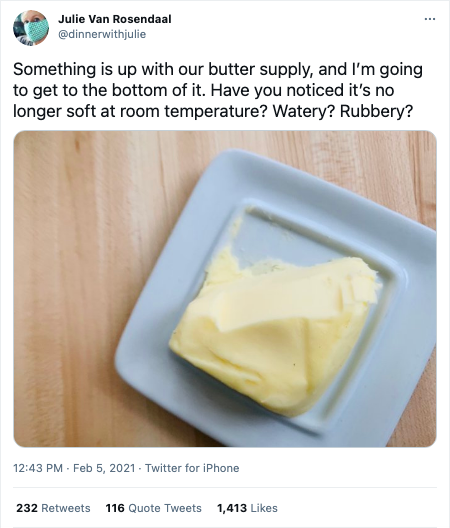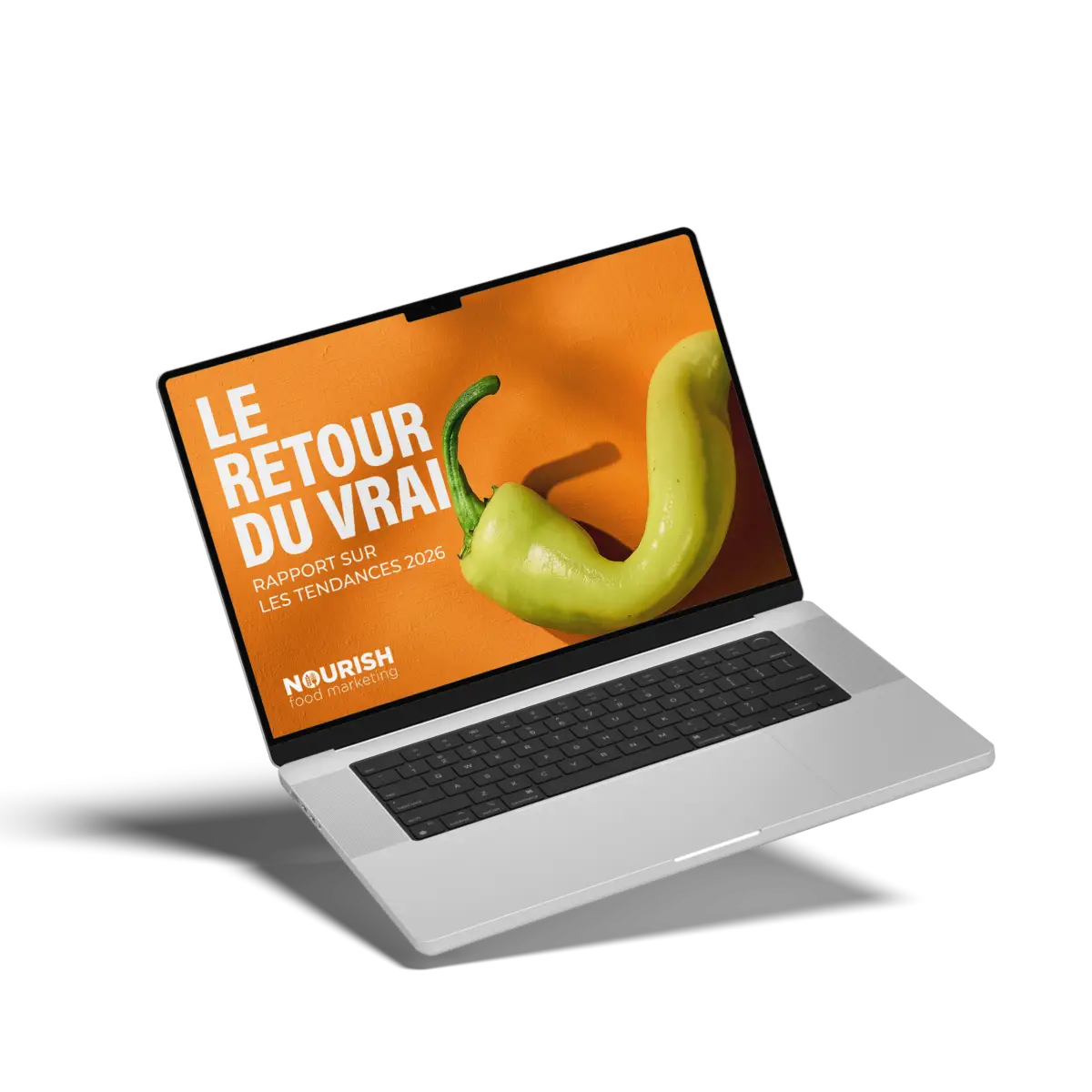We pride ourselves on bridging the gap between agriculture (ag) and consumers and finding common ground. Consumers increasingly want to know where their food comes from and how it was grown. Farmers want to reach out and share how they produce safe and healthy food.
But having a genuine conversation is trickier than it might sound. Consumers and farmers live in different places and approach the topic of agriculture and food in different ways. And that’s why buttergate is the perfect parable on the importance of bridging the consumer-ag gap and paying attention to consumer perception, regardless of whether it’s fact-based or not.
From Angel to Devil and Back Again
No doubt our relationship with butter has changed over both the long and short term. Butterfat is now considered healthy after being demonized for years and is a key component of the keto diet. And over the past year, we have been eating more at home, especially breakfast, and spending more time in our kitchen and at our kitchen table.

Perhaps it was all that extra time to focus on small details that ultimately led to the “discovery” that something wasn’t quite right with our butter.
The tweet that launched it — from food writer Julie Van Rosendaal — brought the “issue” to the media worldwide, including coverage on the BBC and even The Tonight Show with Jimmy Fallon.
So, is our butter harder? The answer is: no one knows because no one thought this was an important thing to measure. Dairy Farmers Canada (DFC) puts a lot of money into dairy research, but that research is focused mainly on animal science and productivity, not on consumer measures and finding out what might be important to them.
The Hard Facts About Consumers
Never assume that because it’s good for farm productivity and considered safe for use, the consumer will see it the same way. Consumers are emotional rather than rational beings, so sharing scientific facts is not enough. CCFI’s public trust model shows that “shared values are 3–5 times more powerful than facts when it comes to earning trust.” (Which explains attitudes towards GMOs, fad celebrity diets, and politicians on both sides of the border.) In these truth-challenged times, trust trumps truth; your research needs to consider the end-user, as well as consumer-friendlier language. Milk and butterfat are considered public goods in Canada because of our supply management system, translating into a social contract between farmers and consumers.
It’s Not What You Say; It’s How You Say It — And When
Farmers need to feed cows nutritional supplements at certain times of the year and during the gestation period. The palm acids provided are a byproduct of palm oil production, which could have been positioned as a positive upcycling message if those messages had been prepared in advance. It’s also unfortunate that palmitic acid is a natural byproduct in milk and has the same name; this caused some additional consumer confusion about whether these supplements were getting into the milk.
Some consumers have rejected palm due to deforestation and climate change issues, particularly in Indonesia and Malaysia. Not all farmers were prepared to discuss if their palm byproduct came from sustainable sources and what those sustainable certifications mean.
DFC has now asked dairy producers to eliminate palmitic acid supplements and engaged an expert working group to investigate the issue. However, with a bit of pre-work, this didn’t need to happen.
These key messages should have been prepared in advance as part of a good crisis plan and would fall out of consumer research that showed palm to be a potential hot button, whether warranted or not. Consumers trusted the Blue Cow logo. But, the Industry’s lack of consumer understanding could jeopardize all those marketing dollars spent building that trust and transparency.
Remember, butter’s competition is plant-based spreads — previously named margarine! That pendulum could swing again. Just look at the inroads plant-based “mylks” have made in the dairy section.
How can you best future proof your ag business from your own #gate? Have you checked on how consumers may view what you consider standard ag practices? Do you have key messages and a crisis plan developed? If the answer to any of these questions is no, then give us a call!
